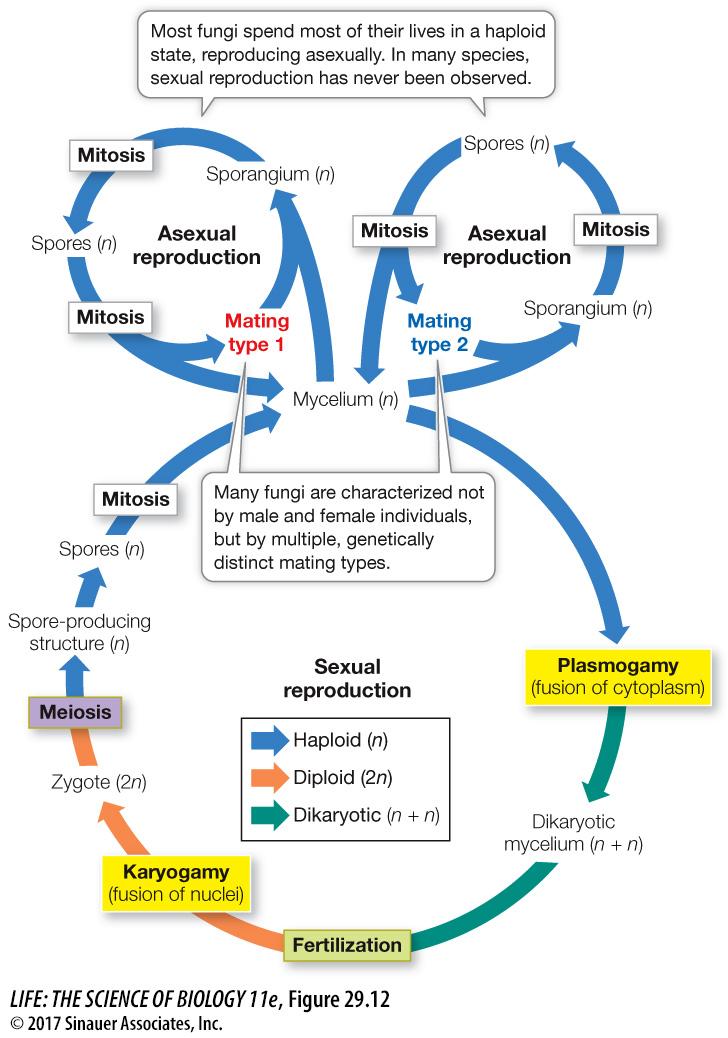Fungi reproduce both sexually and asexually
Both asexual and sexual reproduction occur among the fungi (Figure 29.12). Asexual reproduction takes several forms:
The production of (usually) haploid spores within sporangia
The production of haploid spores (not enclosed in sporangia) at the tips of hyphae; in sac fungi, such spores are called conidia (Greek konis, “dust”)
Cell division by unicellular fungi—
either a relatively equal division of one cell into two (fission) or an asymmetrical division in which a smaller daughter cell is produced (budding) Simple fragmentation of the mycelium

Sexual reproduction is rare (or even unknown) in some groups of fungi but common in others. Sexual reproduction may not occur in some species, or it may occur so rarely that biologists have never observed it. Species in which no sexual stage has been observed were once placed in a separate taxonomic group because knowledge of the sexual life cycle was considered necessary for classifying fungi. Now, however, these species can be related to other species of fungi through analysis of their DNA sequences.
Sexual reproduction in most fungi features an interesting twist: There is no morphological distinction between female and male structures, or between female and male individuals, in most groups of fungi. Rather, there is a genetically determined distinction between two or more mating types. Individuals of the same mating type cannot mate with each other, but they can mate with individuals of another mating type within the same species, thus avoiding self-